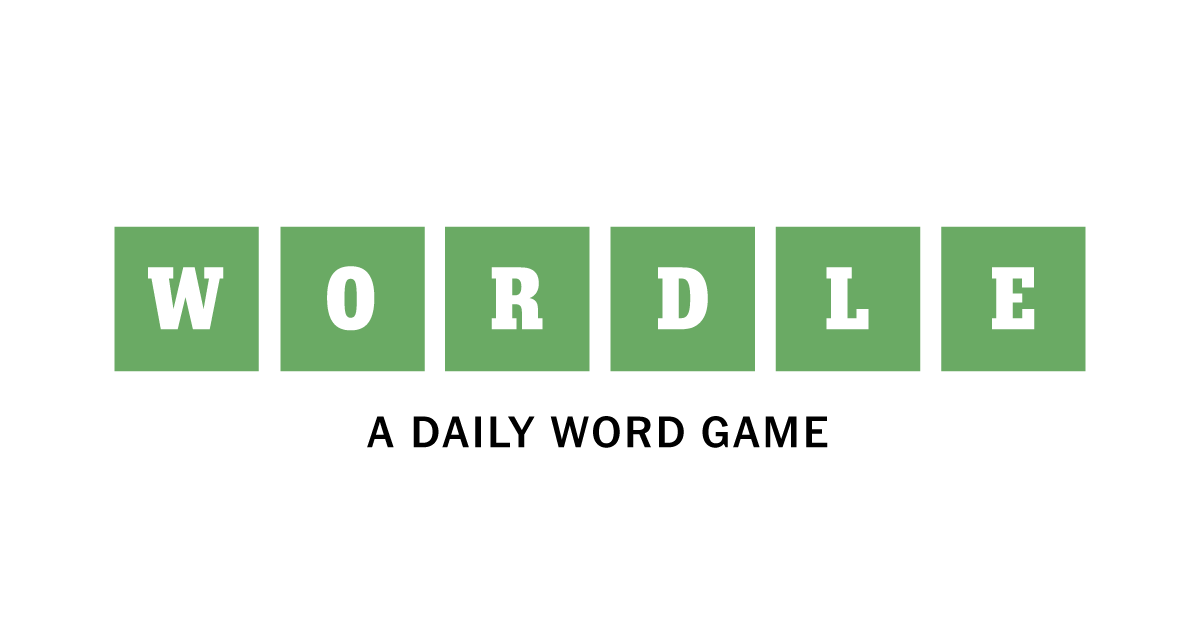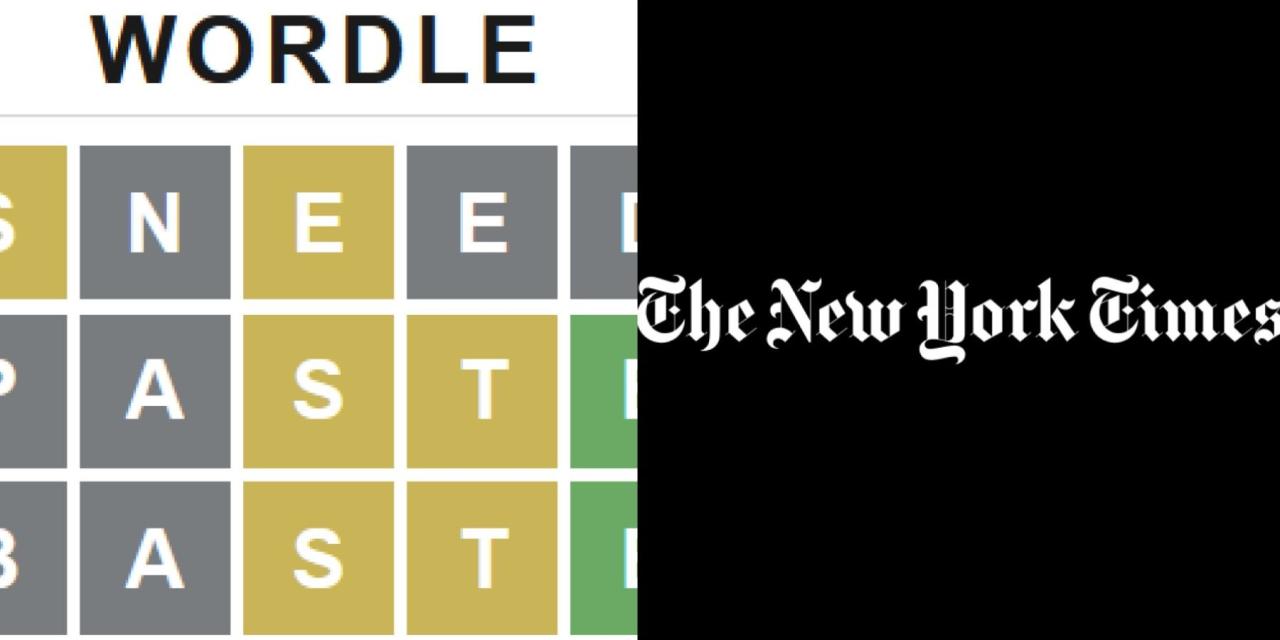Wordle – The New York Times has taken the world by storm, becoming a cultural phenomenon that has captivated players worldwide. This engaging word game has sparked social media buzz, inspired countless variations, and demonstrated the power of simplicity in captivating audiences.
The gameplay is straightforward yet addictive, challenging players to guess a five-letter word within six attempts. The color-coded feedback system provides clues, guiding players towards the correct solution. The daily challenge aspect adds an element of excitement, encouraging players to return for their daily dose of wordplay.
Popularity and Cultural Impact
The sudden surge in popularity of Wordle can be attributed to its simple yet addictive gameplay, which appeals to a wide range of audiences. The game’s accessibility and shareability on social media platforms have also contributed to its viral nature, leading to widespread discussions and challenges among friends and family.
Social Media Buzz and Viral Nature
- Wordle has become a popular topic on social media, with users sharing their daily results and strategies.
- The game’s simple interface and gameplay make it easy to share and discuss, contributing to its viral spread.
- Celebrities and influencers have also joined the Wordle craze, further boosting its popularity and visibility.
Cultural Phenomenon
- Wordle has been featured in numerous articles and news segments, highlighting its cultural impact.
- The game has inspired various parodies and spin-offs, demonstrating its widespread appeal.
- Wordle has become a common topic of conversation, fostering a sense of community and shared experience among players.
Gameplay and Mechanics
Wordle is a word game where players have six chances to guess a five-letter word. After each guess, the letters in the player’s guess are color-coded to indicate how close they are to the correct word.
The color-coding system is as follows:
- Green:The letter is in the correct position.
- Yellow:The letter is in the word, but in the wrong position.
- Gray:The letter is not in the word.
Wordle also has a daily challenge aspect, where players have to guess the same word as everyone else. This creates a sense of community and competition among players, and it helps to keep the game fresh and engaging.
Variations and Spin-offs
Wordle’s popularity has spawned numerous variations and spin-offs, each offering unique gameplay experiences and expanding the appeal of the original game. These variations have attracted a wider audience, catering to different interests and skill levels.
Some of the most popular Wordle variations include:
Worldle
Worldle is a geography-themed variation of Wordle. Instead of guessing a five-letter word, players must guess a country or territory based on its silhouette. The game provides visual clues, such as the shape of the country and its location on a map, to help players narrow down their guesses.
Nerdle
Nerdle is a math-themed variation of Wordle. Players must guess a mathematical equation, such as “3x + 5 = 14,” based on the results of their previous guesses. The game provides feedback on the accuracy of each guess, indicating whether the equation is correct, too high, or too low.
Heardle, Wordle – the new york times
Heardle is a music-themed variation of Wordle. Players must guess a song based on the first few seconds of its audio clip. The game provides additional seconds of the song with each incorrect guess, until the player either guesses correctly or runs out of guesses.
The New York Times Acquisition
In February 2022, The New York Times Company acquired Wordle from its creator, Josh Wardle, for a price in the low seven figures.
This acquisition marked a significant milestone for the game, which had become a global phenomenon in a matter of months. The New York Times saw the potential of Wordle as a way to attract new subscribers and engage existing ones.
Impact on Wordle’s Future
The acquisition by The New York Times has had a number of positive impacts on Wordle’s future.
- Increased visibility and reach:The New York Times has a global reach of over 100 million readers. This has helped to introduce Wordle to a much wider audience than it would have had on its own.
- Improved infrastructure:The New York Times has invested in improving Wordle’s infrastructure, making the game more stable and reliable.
- New features and content:The New York Times has added new features to Wordle, such as the ability to share your results with friends and the introduction of a new “hard mode.” The Times has also pledged to continue to add new content to the game on a regular basis.
The New York Times’ Plans for Wordle
The New York Times has big plans for Wordle. The company sees the game as a way to attract new subscribers and engage existing ones.
The Times has already begun to integrate Wordle into its other products and services. For example, the game is now available as a widget on the New York Times website and in the New York Times app.
The Times is also exploring ways to use Wordle to create new revenue streams. For example, the company could sell subscriptions to a premium version of the game that offers exclusive features.
Accessibility and Inclusivity: Wordle – The New York Times
Wordle is committed to providing an accessible and inclusive gaming experience for all users, regardless of their abilities or backgrounds.
The game offers a range of accessibility features, including:
- Color contrast: Wordle uses high-contrast colors to make the game easier to read and play for people with color blindness or low vision.
- Screen reader compatibility: Wordle is fully compatible with screen readers, making it accessible to users who are blind or visually impaired.
- Language options: Wordle is available in multiple languages, making it accessible to players from all over the world.
Examples of Inclusivity
In addition to its accessibility features, Wordle also promotes inclusivity through its gameplay and design.
- The game is designed to be challenging but not frustrating, making it enjoyable for players of all skill levels.
- Wordle uses a neutral color palette and avoids gendered language, making it welcoming to all players.
- The game has been praised by disability advocates for its commitment to accessibility and inclusivity.
Last Recap
Wordle’s acquisition by The New York Times has further cemented its status as a global phenomenon. The game’s future looks bright, with The New York Times promising to maintain its accessibility and inclusivity while exploring new avenues for growth. Wordle has not only become a beloved pastime but also a testament to the enduring power of word games and the ability of simple concepts to capture the imagination of millions.
Essential Questionnaire
What is Wordle?
Wordle is a word game where players have six attempts to guess a five-letter word based on color-coded feedback.
Why has Wordle become so popular?
Wordle’s simplicity, daily challenge aspect, and social media buzz have contributed to its widespread popularity.
What are some popular variations of Wordle?
Variations include Worldle (geography), Nerdle (math), and Heardle (music).
How does The New York Times’ acquisition impact Wordle?
The acquisition ensures Wordle’s continued growth and accessibility while opening up new possibilities for the game’s future.



